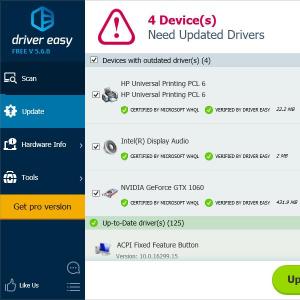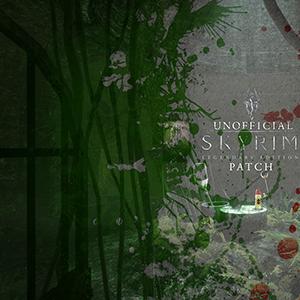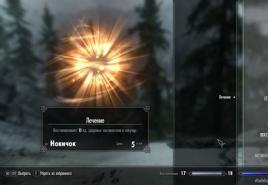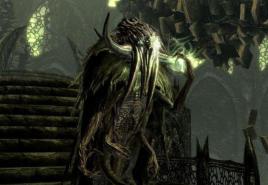A short-term plan is parsing a simple sentence. Parsing a sentence
Short-term lesson plan Subject Class Date Topic General goals Learning outcomes Learning outcomes for students (A) Learning outcomes for students (B) Learning outcomes for students (C) Key ideas Links Requisites (resources) Stages (Time) Start of the lesson (3 minutes) Russian language 6 "A" 05.05.2016 Parsing Complex sentence Know the parsing of a complex sentence. Be able to parse a complex sentence. Know and are able to parse a complex sentence. Know and are able to parse a complex sentence. They are able to independently analyze, synthesize and compare simple sentences as part of a complex sentence. Know and are able to parse a complex sentence. Know how to parse orally and in writing. Know and are able to parse a complex sentence. Develop coherent speech, memory and thinking. GOSO, training program, tutorial. Tables, A4 paper, task cards, stickers, poster, various stationery needed for creative work students. Teacher actions Student actions Assessment Lesson flow 1. Greetings 2. Psychological attitude. Training: "Greetings". 1. Greet teachers 2. Walk around the classroom, shake hands with each other: "Hello", "Hello", "How are you?" etc. Praise, they say each other compliments. Verbal encouragement by the teacher. Homework check (7 minutes) 10 Reception "Thick and thin questions" questions on the passed materials. Children answer Introduction to the topic (8 minutes) Implementation of the goal of the lesson (8 Deconstruct these sentences by member: Children analyze the members of the sentence 1. White steam spreads across the meadows. 2. A sleepy forest looks into the mirror of the bay, in the more silent darkness lies. parsing: Verbal encouragement by the teacher. Verbal encouragement by the teacher. Children read and parse a complex sentence. Formative assessment "Thumb" minutes) 1. Type of sentence according to the purpose of the statement. 2. Whether the sentence is an exclamation point. 3. Simple or complex sentence. Simple sentence: 4. Common or uncommon. 5. Major and minor members of the proposal. 6. Homogeneous members of the proposal (if any). 7. Appeal (if any). Complex sentence: 4. Parts of a complex sentence, their foundations. 5. With or without conjunctions, parts of a complex sentence are connected. An example of a written analysis of a simple sentence: White steam spreads over the meadows. (I. Nikitin.) Complex: In the mirror of the bay the sleepy forest looks, in the thicket of silent darkness lies. Physical minutes (3 minutes) Implementation of the goal of the lesson (15 minutes) (I. Nikitin.) Warm-up 1. Make the first and third sentences in writing, the rest orally. 1. The sun was not ... in the pale ... sky. 2. Long shadows ran from the trees, from the bushes, from the tall haystacks. 3. The sun is already quite high ... it was dying in the clear ... sky, but the fields were still bl ... covered with dew. 4. The damp earth is resilient underfoot, tall dry blades of grass do not move, long threads glisten on the pale grass. (I. S. Turgenev.) Designate sounds in place of highlighted letters. 2. Write down, placing the missing commas. Deconstruct written suggestions. Parse the sentence. 1. We enter the forest ... early in the morning. 2. From the ground rises ... a light haze ... a haze of fog and on each needle .. pine trees on each leaf .. b .. cuts on each blade of grass .. some others .. squeeze small and gentle .. droplets of water. Homework (1 minute) Reflection (2 minutes) D / W exercise. optionally. Children write in diaries What did you like? What questions do you have on a new topic? Children respond to Formative Assessment
Plan - a summary of the lesson on the topic: "Parsing a simple sentence "in 5" A "cl.
Lesson objectives:
- teach how to correctly parse a simple sentence;
- to consolidate knowledge of the classifications of sentences according to the purpose of the statement, intonation, the presence of the main and secondary members of the sentence;
- check the ability to put punctuation marks for homogeneous members of the sentence, address.
Equipment: leaflets with assignments, textbook, Dictionary.
During the classes.
- Organizational moment.
- Homework check.
In the last lesson, you learned how to write a friendly letter. Today we will listen to your letters that you have addressed to your friends. (reading 1-2 letters)
What other types of letters do you know?
Well done, you did your homework. (At the end of the lesson, you need to submit letters for verification)
3. Vocabulary dictation.
(1 student). Floral scent, shaggy rains, darkened by dampness, enjoy the landscape ( define a way of linking phrases)
(2 student ) a path running along the river, lonely golden birches, a serious danger, an amazing harvest of carrots and cabbage. ( perform morphemic word parsing: lonely, amazing; write word: running in transcription.)
4 Orthoepic minute.. The assignment is written in advance on the blackboard (the student comes out and emphasizes the words, the whole class writes in the dictionary)
Quarter, sorrel, bows, call, cakes, sweater, deepen, simplify.
5 Physical minute. ( conducted by a student of grade 5)
Apple tree in my garden
Bends strongly in the wind.
Leaned to the right, to the left,
I wanted to swing: 1, 2, 3, 4, 5.
Branches up and down again!
And she stretched them forward.
And as the breeze dies down
My apple tree will fall asleep.
6 Frontal poll
Game "Who is faster"
- - Name the sentences on the purpose of the statement (Narrative, incentive, interrogative)
The incentive offer contains advice, request, order, wish. (example)
- The narrative sentence contains message. (example)
- The interrogative sentence contains question. (example)
A suggestion for emotional coloring can be exclamation and non-exclamation
Subject and predicate are grammatical basis.
- - By the presence of grammatical bases, sentences are - one-piece and two-piece.
- By the presence of minor members. offers - common and non-common. (example)
7 ... Explanation of the new material.
- - The topic of our lesson is "Parsing a Simple Sentence."
Guys, let's try to formulate the goals of our lesson, based on the topic. (Children independently determine the goals of the lesson)
Guys, define a simple sentence.
What other sentence do you know for having a grammatical base? How does a complex sentence differ from a simple one?)
- Let's recall the steps involved in parsing a sentence. Open the tutorials on p. 89 pairs. 44
- Securing the material.
1 task (Cards with the task are attached to the board in advance in the form of autumn leaves)
Now, guys, imagine that we are in the forest and we need to collect leaves for a herbarium.
Guys, what is a herbarium? (one of the students independently looks at LZ the words "Explanatory Dictionary" by SI Ozhegov, reads them aloud.)
But these are unusual pieces of paper, but with a spelling and punctuation assignment.
(4 students go to the blackboard, remove the sheets and do it independently).
Only one student takes a piece of paper and completes the assignment with the class. (You need to insert the missing letters, place punctuation marks and parse the sentence)
1 The shore was covered with ... mice and sedges.
2 In the garden there are also cherries and apples ... and pears.
3 Oak is a heat-loving tree.
4 So ... nce shines but (not) warms.
5 Guys, take care of nature!
After completion, the students at the blackboard carry out a mutual check.
2 task. (Individual words are written on the blackboard in advance. The students need to rearrange the words so that sentences are obtained, then parse them.) Two students carry out this task at the blackboard, the rest independently in notebooks.
Small mushrooms, on a spruce, squirrel, a knot, aspen mushrooms, to dry, hung up (On a spruce knot, a squirrel hung to dry aspen mushrooms, small mushrooms.)
Snow, will fall, the ground, deep, will cover, and, with a blanket of white. (Deep snow will fall and cover the ground with a white blanket.)
9. Summing up.
- Students summarize the lesson.
The teacher comments on the work in the class, gives marks.
10. Homework. Learn the order of parsing paragraph 44, exercise 217.
Lesson Topic: Parsing a Simple Sentence
Objectives:
1) introduce the order of parsing
a simple sentence;
2) to form the ability to produce syntactic
analysis (oral and written) of a simple sentence;
3) activation of the ability to express one's thoughts clearly and concisely;
4) fostering attention to the word through construction
proposals;
5) repetition of the studied material on the topic "Syntax", parts of speech, studied spelling, punctogram;
6) to form an idea of \u200b\u200bhealth as one of the main
values \u200b\u200bof human life.
Receptions TRKM: 1. Reception "True - False Statements"
3. Reception "Thin and thick questions"
4. "Catch the mistake" technique
5. Reception "Find matches"
6 cluster
Form of work: 1.Front
2. Individual
3. Steam room
During the classes.
1. Org. moment .
Hello, I am glad to welcome you to a Russian lesson.
Let's, friends, smile at each other
we will give smiles to the guests,
are you ready for the lesson?
Then to work, I wish you good luck!
Well done! Everyone smiled! Did you know that a smile is the best health pill?
You have emoticons on your desks, they will also smile at you and help maintain a good mood in the lesson.
Take the emoticon in your hand and lift it up.
May you be successful in the lesson!
Write down the number, cool work.
2. Stage of the call. Knowledge update.
And now, guys, we are going to play the game "Do you believe?" This game will help us find out what you know and what you don’t know.
I will ask subtle questions to which you will only answer “yes” or “no” to me, and thick questions that need to be answered in detail.
Technique "True and False Statements", "Thin and Fat Questions"
Do you believe that emotional sentences are exclamatory and non-exclamatory? (Yes)
Do you believe that sentences about the purpose of the utterance are common and not common? (no) And what are they? (narrative, incentive, interrogative)
Do you believe that simple sentences have one grammatical stem, and complex sentences have two or more grammatical stems? (Yes)
Do you believe that complement, circumstance, and definition are the main members of a sentence? (no) Which members of the proposal are the main ones? (subject and predicate)
Guys, tell me, please, what topic did I ask you questions about? (sentence)
Which section of language science studies sentence? (Syntax)
Do you know, guys, what is the name of the analysis of the proposal by members?
What should we learn in the lesson? (Parsing
simple sentence.)
Please write down the topic of the lesson in a notebook.
In addition, we must review and summarize knowledge on the topic "Syntax".
And riddles, proverbs, sayings and texts about a healthy lifestyle will help us with this. Our lesson will be held under the motto: "You will be healthy, you will get everything." How do you understand this adage, guys? (if you are healthy, you don’t get sick, you can study, work, and you will have everything)
3. Dictionary and spelling work.
And now we are going to play "Spelling Football". I will ask you riddles, and you will write down the answers separated by commas. Be careful not to let a goal into your own goal, i.e. don't make mistakes.
1.
Green meadow,
One hundred benches around
Gate to gate
The people are running briskly.
On these gates -
Fishing nets.(stadium)
2.
- I don’t understand, guys, who are you?
Birders? Anglers?
What is this net in the yard?
- Would you mind the game,
You'd better walk away!
We play ... (volleyball)
3. This horse does not eat oats,
Instead of legs - two wheels.
Sit astride and ride it
Only better to drive. (a bike)
4. Ribbon, ball, log and bars,
The rings are next to them.
I do not presume to list
Lots of shells.
Beauty and plastic
Gives us ... (gymnastics)
5 . In this sport, players
All are agile and tall.
They love to play ball
And throw it into the ring.
The ball hits the floor loudly
So this is ... (basketball)
6 . In an honest fight, I will not crush
I will protect two sisters.
I beat a pear in training
Because I ... (boxer)
7 . Here are the skaters
Exercise in jumping.
And the ice sparkles sparklingly.
Those athletes - ... (skaters)
8. Both boys and girls
They love us very much in winter,
Cut the ice with a thin pattern
They don't want to go home.
We are graceful and light
We are curly ... (skates)
Mutual verification.I hope you did not concede a single goal.
- Guys! What spelling did we write the words into? (Unverifiable vowels and consonants at the root of the word) And what words are superfluous? What words can you find a test word for? (boxer, skates) What is the common theme of these words? (sport) What role does it play for human health? What do you need to do to live healthy and happy for many years? (right, do sports) Write down a sentence
We will temper ourselves more often and play sports!
4. Explanation of the new material.
Cluster compilation.
Parsing the recorded sentence. Characteristics of the proposal.
(Incentive, exclamation, simple, two-part, widespread, complicated by homogeneous predicates)
5.Parts of speech
Now let's check how you know the parts of speech, because sentences and phrases consist of words expressed in different parts speech.
Which word has a wrong part of speech?
1) Heals - a verb in the form of the present tense;
2) And- preposition
3) Good is an adjective;
4) Laughter is a noun. Answer: 2
6. We go in search of offers. Work in pairs.
You have leaflets with diagrams on your desks. And on the slide you see the proposals. Find a proposal for your scheme.
1. We grow bold, tanned in the sun.
2. Vitamins will help you from colds and sore throats.
3. Exercise every day, fatigue, lethargy, laziness will pass!
4. Let's get hardened and go in for sports!
5. Do you like to play football?
6. Air, sun and water are our best friends.
Write down the sentences you find and parse them. There is 1 person at the board (the partner does it in a notebook, and then checks at the board)
7. Work in pairs.
You have envelopes on your desks, open them and make sentences from words so that you get proverbs and sayings about a healthy lifestyle. We work in pairs (1 offer per table)
1. Appetite from the patient runs, and rolls to the healthy.
2. The disease will not catch up with the quick and dexterous.
3. Health is more valuable than wealth.
4. Cleanliness is the key to health.
5.Healthy sleep - great well-being during the day.
6. A good laugh makes the soul healthy.
Write down the resulting sentences and parse them syntactically. At the blackboard, 1 person works on a card - analysis of words by composition: cleanliness, exercise.
8. Physical education
Now we will spend a physical education with you. Since today we are repeating the studied material from the syntax, the warm-up will be associated with the knowledge of the terminology that we use.
Rules of the game. Students stand up from their seats, hands on their belts. The teacher names various terms. If the terms refer to syntax, raise your hands up, but if to other sections of the language, lower your hands down.
Prefix, grammatical base, phrase, root, word stem, comma, circumstance, dash, suffix, sentence, appeal, letter.
9. Reception "Catch a mistake"
Correct mistakes in the use of words in these sentences.
Petya's laugh is infectious. Influenza is a contagious disease.
Write down the corrected sentences. Explain the setting of the dash in sentence 2.
10. Our diet also affects our health. Eliminate pasta, buns, sweets from the daily menu, and leave as many vegetables and fruits as possible. Hear what one of their poems says? Expressive reading poems.
Wonderful vegetable garden.
The people are surprised:
What a wonderful garden?
There is radish and salad,
Onions, parsley and spinach.
Tomatoes cucumbers
Maturing together - well done!
Both potatoes and cabbage
They grow densely in the beds.
And everyone says in unison:
"We are growing here for the guys.
For diligence and work
The whole harvest will be gathered. "
Why should you eat as many fruits and vegetables as possible guys?
Tasks: 1) find sentences complicated by homogeneous members of the sentence;
2) Make a simple sentence with homogeneous members and a general word. Vegetables grow in the garden: radishes, lettuce, cabbage, tomatoes.
2) draw the diagram
3. Stage "Reflection"
11. Working with text.Read, insert the missing letters, place punctuation marks. Parse one sentence. (Calm music sounds, sounds of wildlife).
1. Music heals.
Everyone loves music. More music improves the mood 4. And pl ... haya music destroys nervous system h ... adorable.
From x ... roshes of music even r ... stu ... From bad music they can dry up, ... die.
2. Calm music of ra (s, ss) l ... beats, removes ps ... chemical tension ... genius. It combines the soothing sounds of w ... howl of nature: the murmur ... of a brook, the sound of the sea, the g ... los of birds. She returns ... peace of mind and good mood.
Or give a test? Or text in the 1st row, the test in the 2nd row?
Our lesson is coming to an end, you did a very good job today. Well done! In memory of our lesson, you will have emoticons, on back side which you will find my wishes for you.
The lesson is over, thank you all!
Parsing a simple sentence has become firmly established in the practice of initial and high school... This is the most difficult and voluminous form of parsing. It includes a characteristic and a sentence diagram, analysis by members, indicating parts of speech.
The structure and meaning of a simple sentence is studied starting from grade 5. The full set of signs of a simple sentence is indicated in grade 8, and in grade 9, the focus is on complex sentences.
In this type of parsing, the levels of morphology and syntax are correlated: the student must be able to determine the parts of speech, recognize their forms, find alliances, understand the ways of connecting words in a phrase, know the signs of the main and secondary members of the sentence.
Let's start with the simplest: help the children get ready for parsing in grade 5. In elementary school, the student remembers the parsing sequence and performs it at an elementary level, indicating grammatical basis, syntactic connections between words, the type of sentence in terms of the composition and purpose of the statement, learns to draw up schemes and find homogeneous members.
In elementary school, different Russian language programs are used, so the level of requirements and preparation of students are different. In the fifth grade, I hosted children enrolled in primary school according to the programs educational system "School 2100", "School of Russia" and "Primary school XXI century ". There are also big differences. Teachers primary school do a tremendous job to compensate for the shortcomings of their textbooks, and they themselves "forge" successive links between primary and secondary schools.
In grade 5, the material on the analysis of the proposal is generalized, expanded and built into more full form, in grades 6-7 is improved taking into account the newly studied morphological units ( verb forms: participle and gerunds; adverb and category of state; service words: prepositions, conjunctions and particles).

Let's show with examples the differences between the level of requirements in the parsing format.
|
In grade 4 |
In grade 5 |
|
In a simple sentence, the grammatical base is highlighted, familiar parts of speech are indicated above the words, homogeneous members are emphasized, phrases are written out or syntactic links between words are drawn. Scheme: [O -, O]. Narrative, non-exclamatory, simple, common, with homogeneous predicates. Noun (main word) + adj., Ch. (Main word) + n. Ch. (Main word) + places. Adverb + Ch. (Main word) |
Syntactic links are not drawn, word combinations are not written out, the scheme and basic designations are the same, but the characteristics are different: narrative, non-exclamatory, simple, two-part, widespread, complicated by homogeneous predicates. Analysis is constantly practiced in the classroom and participates in grammar tasks of control dictations. |
|
AT complex sentence the grammatical foundations are emphasized, the parts are numbered, familiar parts of speech are signed above the words, the type is indicated according to the purpose of the statement and emotional coloring, according to the composition and the presence of minor members. Parsing scheme: [O and O] 1, 2, and 3. Narrative, non-exclamatory, complex, common. |
The scheme remains the same, but the characteristic is different: narrative, non-exclamatory, complex, consists of 3 parts that are connected by a non-union and allied connection, 1 part has homogeneous members, all parts are two-part and widespread. Parsing a complex sentence in grade 5 is educational in nature and is not a means of control. |
|
Sentence schemes with direct speech: A: "P!" or "P," - a. The concept of quotation is introduced, which coincides in design with direct speech. |
The schemes are supplemented by a break in direct speech with the words of the author: "P, - a. - P." and "P, - a, - p". The concept of dialogue and methods of its design are introduced. Schemes are made, but the characteristics of sentences with direct speech are not made. |
Parse plan for a simple sentence
1. Determine the type of proposal for the purpose of the statement (narrative, interrogative, incentive).
2. Find out the type of sentence for emotional coloring (non-exclamation or exclamation).
3. Find the grammatical basis of the sentence, emphasize it and indicate the ways of expression, indicate that the sentence is simple.
4. Determine the composition of the main members of the proposal (two-part or one-part).
5. Determine the presence of minor members (common or non-common).
6. Underline the minor members of the sentence, indicate the ways of their expression (parts of speech): from the subject and the predicate.
7. Determine the presence of missing members of the proposal (complete or incomplete).
8. Determine the presence of complications (complicated or not complicated).
9. Write down the characteristics of the proposal.
10. Draw up a proposal outline.
For the analysis, we used sentences from Sergey Kozlov's wonderful fairy tales about the Hedgehog and the Bear.
1) It was an extraordinary autumn day!
2) The duty of everyone is to work.
3) Thirty mosquitoes ran into the clearing and played on their squeaky violins.
4) He has no dad, no mom, no hedgehog, no teddy bear.
5) And Squirrel took nuts and a cup and hurried after.
6) And they put things in a basket: mushrooms, honey, a kettle, cups - and went to the river.
7) And pine needles, and spruce cones, and even a cobweb - everyone straightened up, smiled and sucked the last autumn song of the grass with all their might.
8) The Hedgehog lay, up to the very nose covered with a blanket, and looked at the Bear with quiet eyes.
9) The hedgehog was sitting on a hill under a pine tree and looked at the valley lit by the moonlight, flooded with fog.
10) Across the river, blazing aspens, the forest was dark.
11) So until the evening they ran, jumped, jumped off the cliff and yelled at the top of their lungs, shading the stillness and silence of the autumn forest.
12) And he jumped like a real kangaroo.
13) Water, where are you running?
14) Maybe he's crazy?
15) I think he imagined himself ... the wind.
Samples of parsing simple sentences




I approve:
Director of KSU "Svobodnenskaya secondary school"
N. A. Merker _____________
Ososkova Anastasia Igorevna 2 category 3 (basic level)subject
Russian language
class
5 B"
date
14.11.2016
Lesson topic
Parsing a simple sentence.
goal
Form students of the concept of parsing the members of the proposal
Tasks
Organize the activities of students to assimilate new material;
Developing the ability to highlight main and minor members of the proposal;
The development of dialogical speech, the ability to synthesize, compare, analyze, independently draw conclusions.
Methods
Brainstorming, filling out the table and diagrams for sentences, analysis of sentences, logical tasks.
Integration of seven modules
KM, dialogical teaching, management and leadership
in teaching, OO, work with gifted students.
Expected Result
Students:
They are able to find the main and secondary members of the proposal, pose questions to them, graphically highlight them in the letter;
-can write simple sentences.
Equipment,
visibility
Markers, A-4 paper, stickers, a poster, various stationery necessary for the creative work of students.
During the classes
Teacher activity
Student activities
Org. moment.
1.Greetings
2. Psychological attitude. Training: "Greetings".
1.Greet teachers
2. Walking around the classroom, shaking hands with each other: "Hello", "Hello", "How are you?" etc. Praise, compliment each other.
Brain attack.
Poll d / z.
І. Motivation
Motivation
Application.
Completing assignments.
Creative minute.
Reflection.
Evaluation
Homework.
Today guys we have an unusual day. We are going to travel to the country "Syntax". To begin our journey, we must answer one question:
What is syntax?
Well done, now we have an open road and we can start our journey. But before to start our journey let's split into groups.
I will give you grading forms where you will give yourself grades for each step of the lesson.
1 stop. Answers on questions .
What are the main members of the proposal?
What is a subject?
What is a predicate?
What are the minor members of the proposal.
What is an add-on?
What is definition?
What is a circumstance?
2 stop . Fill the table
3 stop. The main members of the proposal.
Read the sentences. Find the main members of the sentence.
4 stop. Minor members of the proposal.
Read the text. Write out the first sentence. Emphasize minor members of the sentence.
Draw sketches for this text.
5 stop. Warm up.
Physical education.
6 stop. Analysis of proposals.
Read the sentences and parse the sentence members.
7 stop. Complete the diagrams.
Fill out the schemes for the proposals from stop 6.
8 stop. Proverb - folk wisdom.
Complete the proverbs.
9 stop. We repeat what we know.
MINI TEST
10 stop. The ultimate.
My mood.
Guys, what did we talk about in the lesson? Did you like the lesson? Write your opinion on the lesson (slide 32).
Grades are given on the scoresheet.
Write a message short story about how the lesson went. Write out one sentence and parse the sentence by member.
Syntax is a branch of language science that studies phrases and sentences.
By name, fruits are divided into groups. Then they themselves draw these fruits.
Student responses. (Who will first raise their hand)
Fill in the prepared table.
1. The bell rang. 2. The students entered. 3. The teacher greeted. (Verbally)
All three groups are performed.
In the spring, schoolchildren plant fruit trees.
Paperwork.
Group 1: A friendly spring has come.
Group 2: A warm wind blew from the south.
Group 3: Spring painted trees green.
Suggestion schemes are distributed.
They select words that are suitable for the meaning and say which member of the sentence they are.
Read sentences and find the major and minor members of the sentence.
Choose "smiley".
The test is performed and verified by the key. Give marks.
Write down








